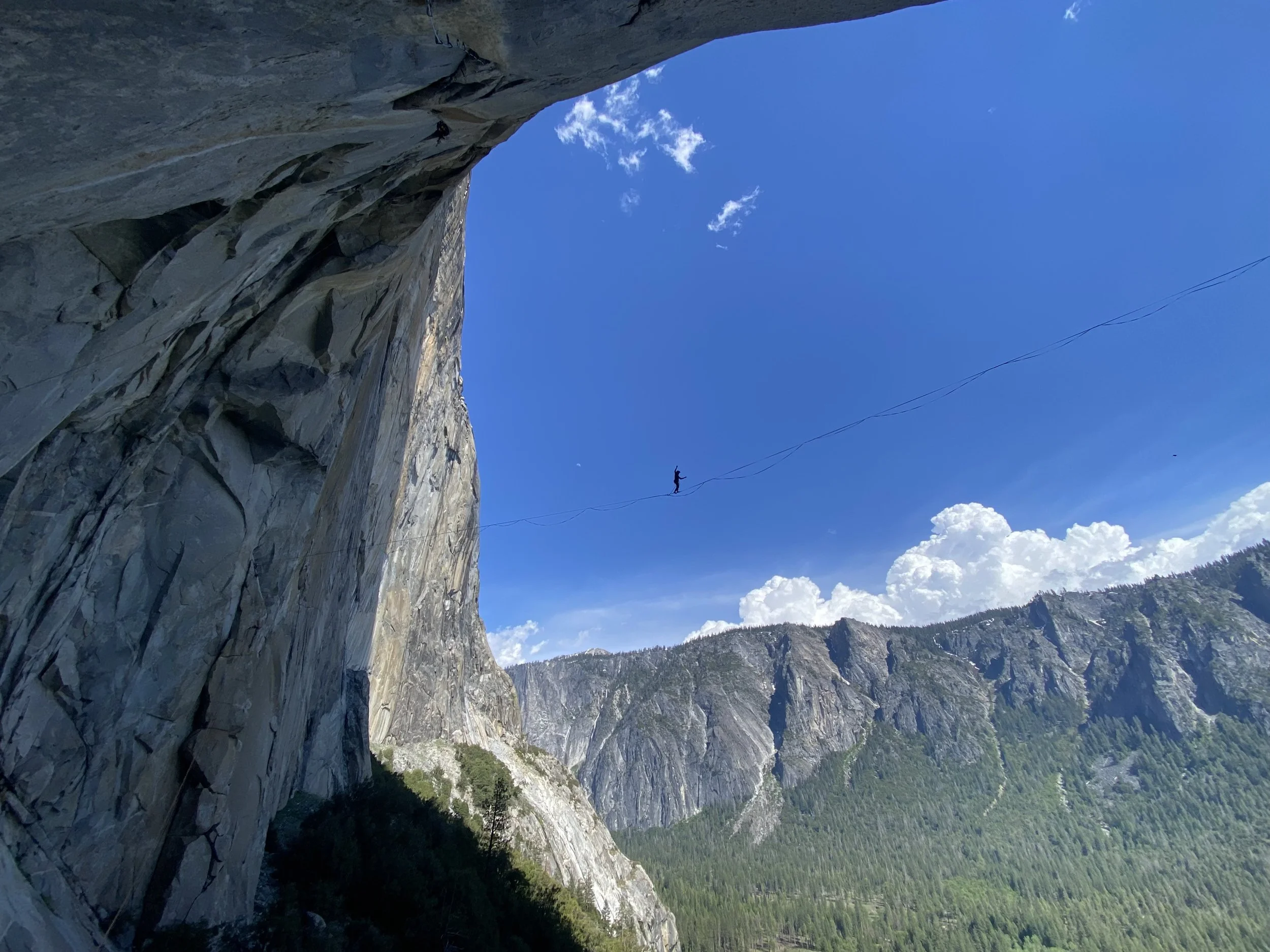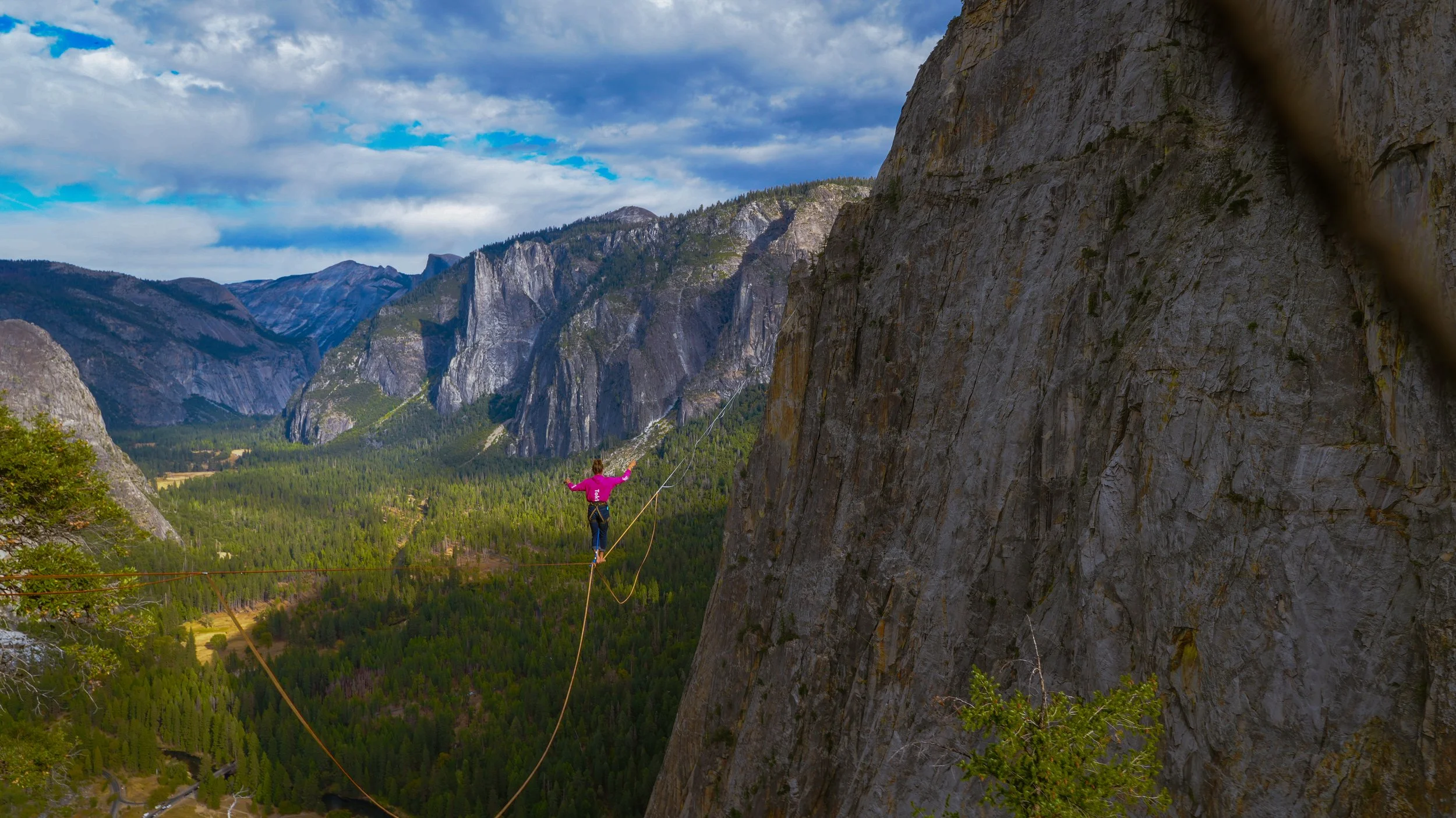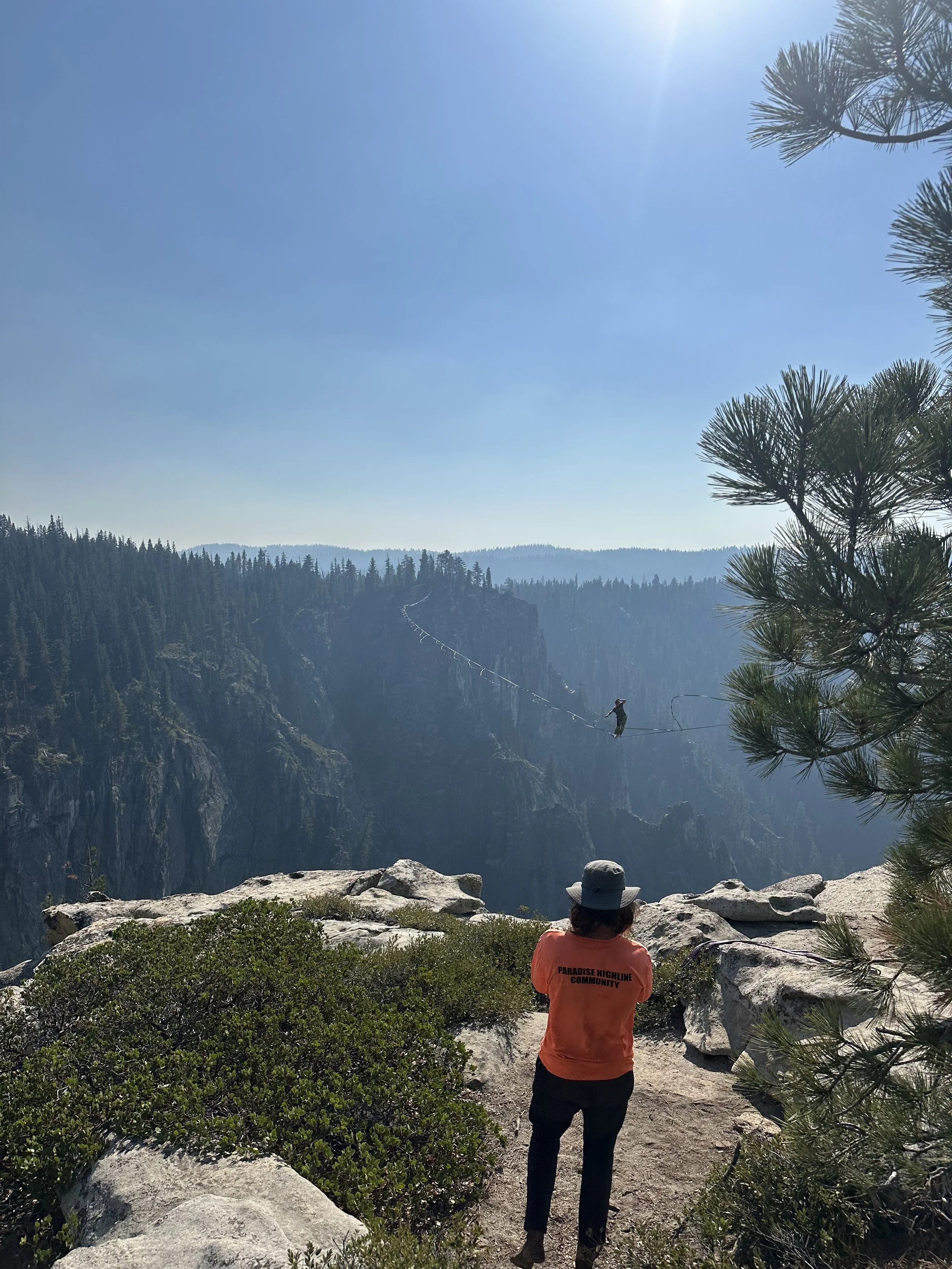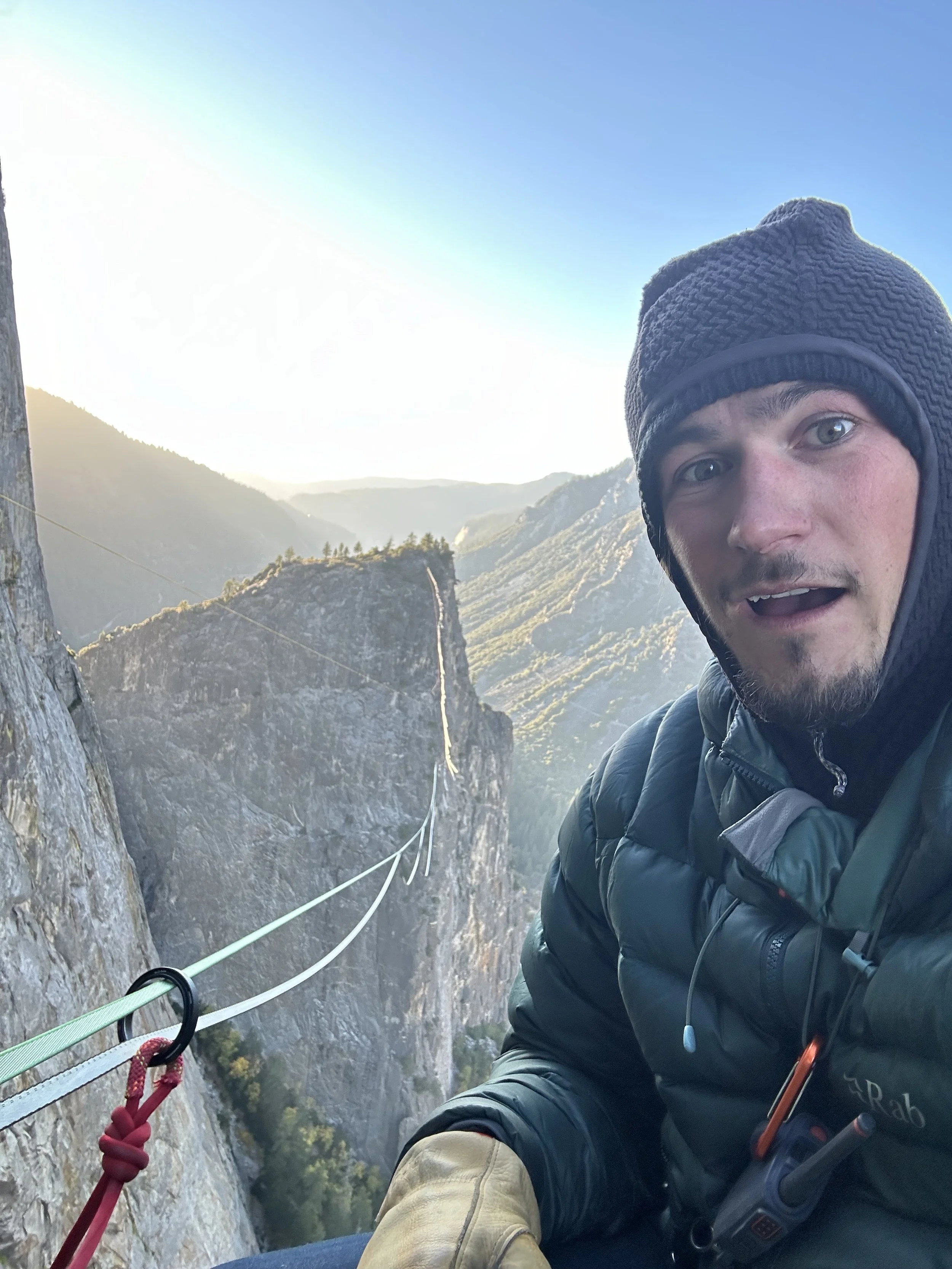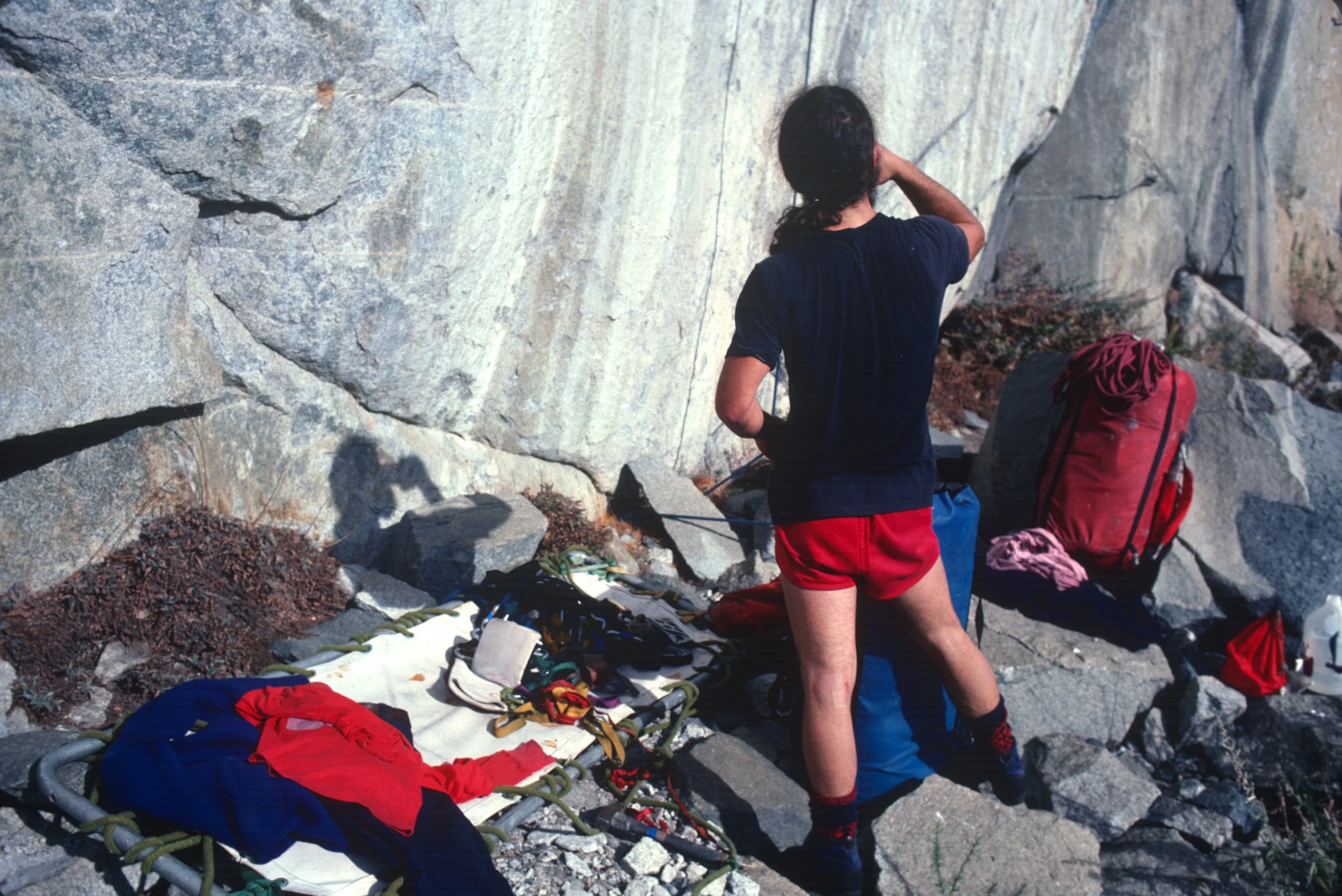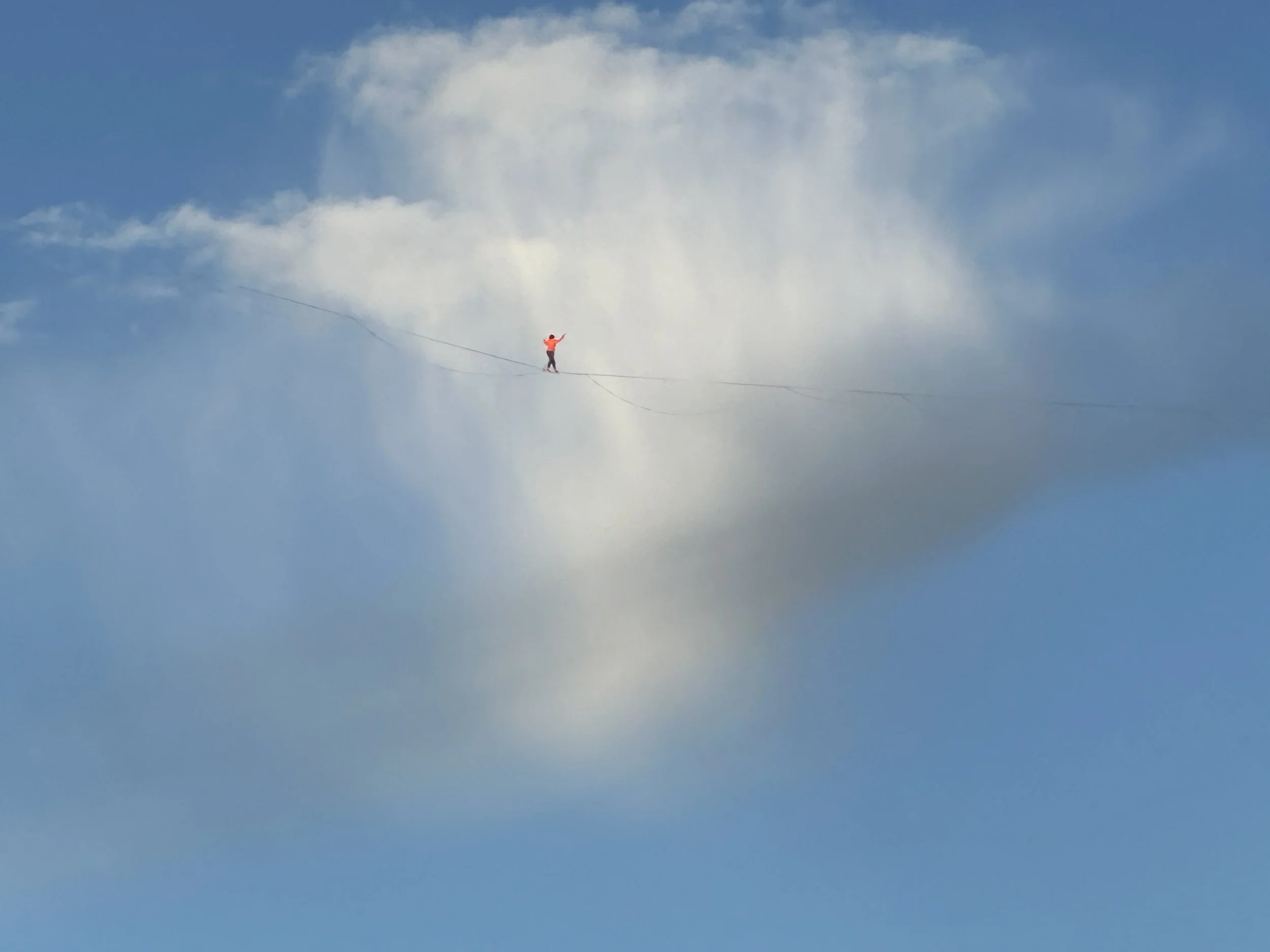EDITION 32 - NOVEMBER 5, 2025
Your window into the stories, history, and ongoing work to preserve Yosemite’s climbing legacy.
A Note from the Editor
I visited Yosemite yesterday (Nov. 2) and couldn’t help but be amazed by the landscape. Driving along Southside Drive, I twisted around bends shrouded in trees lit up with fall colors — browns and greens, reds and oranges. I pulled up to Sentinel Creek to a packed parking area full of climbers’ trucks and vans — fuller than I’ve ever seen — and once at the crags I ran into my regular partners Pat and Maggie, their friend Norm, and chatted with just about every team there. There were folks from New Paltz, and we talked about the Gunks as I led a hand crack paralleling their line. I ran into Linda Jaret, event coordinator for the Yosemite Facelift, and ran laps on my favorite lines at the crag, Yin Yang and Hari Kari. A slight wind blew, and I heard a rustle from above; a few of us looked up to see a maple tree shedding its leaves.
After climbing, I met up with Elliot Faber and Sasha DiGiulian at the Village Store, where they told me they were setting off first thing in the morning to spend potentially weeks on El Cap to attempt the Direct Line/Platinum Wall. They were full of smiles, and with them were longtime locals and highline experts Ryan Sheridan and Clayton Koob.
Koob and I started chatting about meeting before at an employee housing area behind the Yosemite Lodge, where there’s a series of slack lines set up. I said I recognized him from somewhere else, and it clicked: he’s featured in a YCA poster. It reads:
August 20, 2023 — Over Yosemite Valley and under the setting sun, Clayton Koob completes the first crossing of “Golden Hour.” The newly established highline spans an 800-foot gap between Middle Cathedral Rock and the Lower Cathedral summit slopes. These are the first steps in a magnificent place. Photo by Ryan Sheridan.
He listed off a few of his record-length highlines in the park, and before he got too detailed about his favorites, I asked to profile him for this week’s newsletter. This morning we talked for an hour; see feature below.
As to why he was smiling when I greeted him at the Village Store, he said, “It’s as good as it gets right now. This time of fall and spring is just so magical—the leaves falling, bright oranges and golds mixed in with the greens.”
Rebecca Latson at National Parks Traveler wrote on Nov. 2:
Now, Yosemite is not one of the more well-known park units for fall colors—certainly nothing like Shenandoah, Great Smoky Mountains, or Acadia national parks, or the Blue Ridge Parkway. Most of the trees in Yosemite are conifers. That said, around mid-to-late October, those deciduous trees growing within the park—including big-leaf maples, black oaks, quaking aspen, white alder, Pacific dogwoods, and black and Fremont cottonwoods—provide eye-popping brilliance as you drive to and through the park exploring the forests and valley, especially near the Merced River.
Where are spots to view fall leaf color in Yosemite?
All along the maze of roads through Yosemite Valley
On either side of the Merced River
The Bridalveil Fall Trail and surrounding network of trails
The forested picnic areas and campgrounds
Mirror Lake and the Mirror Lake Trail
Tenaya Lake, located along Tioga Road
Tioga Road, where you will see the bright yellow-gold color presented by aspen stands
Curry Village
Glacier Point, where you’ll spot yellow deer brush and aspens
Wawona and Wawona Road
Tuolumne
Lucy Hodgman at the San Francisco Chronicle, in her story updated Nov. 2, “Gorgeous, free and free-wheeling: What Yosemite is really like a month into shutdown,” reports:
With peak fall foliage coinciding with sunny weather, the park was buzzing with people on Thursday—more than usual for this time of year, by [Dan] Davis’ estimate. Golden leaves blazed against the gleaming rock formations in Yosemite Valley. National Park Service–run sites such as the Yosemite Museum were closed, but most cafés and shops were kept open by vendors. Restrooms, campgrounds, and trash areas were all clean because maintenance workers are still on duty.
Both [Paul] Kimbrough and Davis said they had seen people BASE jumping off El Capitan in broad daylight last week.
As CBS reports on Instagram:
Base jumping in national parks is illegal, but with park staffers furloughed by the government shutdown, thrill seekers in parks like Yosemite are getting more daring.
Also in the news, in a story posted on Oct. 29, National Parks reporter Sam Mauhay-Moore at SF Gate writes:
“Climber rescued from El Capitan in Yosemite after suffering injury from fall.”
CHP’s Fresno office aviation unit responded to a request from Yosemite Search and Rescue regarding the climber, who was stuck on El [Cap Spire]—a granite pillar with a flat top about halfway up the [big wall route] Salathé Wall. Park ranger and Yosemite Search and Rescue lead Jesse McGahey was then placed high on the wall via helicopter.
McGahey then performed emergency medical care on the climber, and a helicopter evacuation was initiated.
Since last week’s rescue, the injured climber has “received urgent surgical care and is now recovering well,” the Park Service wrote.
In other news, Climbing Magazine reported that:
Will Moss is the youngest to free the ‘Nose’ (5.14a; 3,000ft) in less than 24 hours and has joined the ranks of Lynn Hill, Tommy Caldwell, and (just last month!) Connor Herson in earning one of Yosemite’s most coveted free climbing achievements.
Read the full interview here.
See feature on Clayton Koob below and Ken’s founder’s note.
Chris Van Leuven
Editor, Yosemite Climbing Association News Brief
YosemiteClimbing.org
Clayton Koob making the first no-fall cross of the El Cap alcove 120m line. Photo: Koob collection
Finding Stillness in Motion: Clayton Koob on Highlining in Yosemite
From the High Country to Yosemite Valley, Koob walks the Park’s longest lines—and sees them as fleeting art in the sky.
“It’s total meditation for me; I like to spend a while on lines every day if I can,” says Clayton Koob, sipping coffee at the Yosemite Lodge. It’s 10 a.m. on a Monday in early November, and he’s just woken up after spending the previous night on El Cap until 3 a.m., helping haul gear far up the wall.
A local who’s worked seasonally in Yosemite since the early 2020s—as a backpacking and hiking guide and in various other concession and Park Service roles—Koob’s dedications are big walling and Leave No Trace highlining, meaning not harming the environment. This includes padding trees, etc. Learn more here. He’s walked the longest lines in the park and, in late October of this year, climbed the demanding El Cap route Lost in America with fellow highliner Ryan Sheridan.
As for his four longest clean crossings, Koob has walked the 861-meter Taft Point line (his team rigged the first repeat of the line) and the 580-meter Lower Cathedral to Middle Cathedral Rocks. He also did the Liberty Cap to Mt. Broderick line at 304 meters, and the Taft line at 291 meters.
“That mindfulness, and the balance and coordination aspect of it, feels really good,” he says of his daily practice. “You gotta keep up with it—just like climbing. If you’re not free climbing for a while and you hop on an old route, it’s like, ‘Oh man, this is hard.’”
Most mornings, Koob walks his daily training lines behind the employee housing area near the Lodge. But when it comes to rigging true highlines, he goes all in, working around the clock and coordinating with the Park Service when needed. What makes rigging in Yosemite especially challenging and rewarding, he says, is that he has to draw on all his skills as a climber, rigger, and highline walker.
Because drones are illegal in Yosemite, Koob relies on traditional methods—hard, complex, hands-on work—to get lines across vast spans. He follows the rules to the letter: no lines over waterfalls or watercourses, no lines over trails or roadways, and only removable equipment whenever possible (only adding bolts as a last resort). He also files a NOTAM (Notice to Airmen) when setting up mega-long lines so aircraft and helicopters are aware. And he always follows the “no unattended lines” rule—keeping a crew member stationed near the line until it’s dismantled.
That presence serves several purposes: warning curious tourists to stay back from the edge, signaling aircraft if necessary, and monitoring wind and anchor tension. Setting up or taking down the big lines can require a crew of six to twelve people working around the clock.
“A highline is kind of like a temporary art installation,” Koob says. “You put in all this effort to get that little paracord across, you pull the webbing, and you walk it for a few days—and then you take it down. Boop, it’s gone. And it’s gorgeous again, and it’s gorgeous with it, and it’s gorgeous without it. I love that balance.”
Raised in the suburbs of St. Louis, Missouri, Koob’s first trip to Yosemite—a 24-hour dash in 2017 where he climbed with a partner he met in Camp 4 who mistook him for a local—left a lasting impression. He returned in 2021 for a month-long stay, during which he rigged his first Taft Point highline.
Between 2022 and 2025, he balanced seasonal work with Yosemite Hospitality and the Park Service, including stints at the Curry Village store, daycare, ski patrol, porter, and hiking and backpacking guide. For a time, he also started a short-lived Balance Coaching gig in San Francisco, but decided to continue his balance journey before formally teaching others.
Instead, he mentors friends informally, happy to share the experience for free. “When you watch those stars shine in somebody’s eyes for the first time in Yosemite—it’s such a cool experience to be part of. It’s so good to get to share balance with everybody. Still, there’s a responsibility that comes with that—because we want to preserve it and keep it magical and inspiring so everybody can experience it.”
It’s worth emphasizing how difficult slacklining and highlining are—sports Yosemite helped birth. It can take weeks of practice to take a single step on a slackline: a one-inch strip of webbing tensioned between two anchors. Then there’s applying that skill to highlines—spanning massive gaps where wind, exposure, and movement all vastly increase the challenge. The mental side of highlining—facing enormous, crippling exposure that requires mental fortitude to accept exposure and keep moving forward — that’s what draws him.
“You get strong too—you get a really solid core and legs and shoulders through slacklining,” he says. “It’s a really good skill for anybody. Any kid who wants to be a better hockey or baseball player—if they put time into balance-oriented sports, it’ll only make them better. You build body awareness, focus, and strength all at once.”
That required strength is as mental as it is physical.
“There’s balance in everything—you have to find that focus. The more you practice, the stronger your mind gets. It’s like building muscle in your brain. You’re chasing that flow state, that place where you stop thinking and just move. That’s what keeps me coming back—finding that stillness in motion.”
Koob calls highlining a community sport, distinct from climbing’s more personal or partner focus. “Highlining is very collaborative—you come together with others,” he says. On any given day out at the Rostrum, he’s seen as many as a dozen people walking or learning new skills—rollovers, mounts, and clean walks.
Planning and executing the longest lines can take months. “The Cathedral project took a year of planning—big-wall skills and seven people moving in unison,” he says. And though the sight of a thin webbing strung high above Yosemite Valley might look terrifying, Koob insists that, when done right, highlining is one of the safest sports in the park.
“I truly think it’s one of the safer options in Yosemite when you do it right,” he says. “It’s about knowing what trees to use, what boulders to use, how to equalize everything.” He points out that every line is backed up redundantly, with harnesses, tethers, shackles, and buddy checks.
Like climbing, Koob didn’t rush into Yosemite’s longest lines. He worked up gradually—repeating the classics, learning the history, and respecting the lineage of those who came before.
“I started repeating all the Yosemite lines people had done—like a big-wall progression.”
Left to right: Toby Calhoun (70m) and Clayton Koob (new 145m as of Sept. 2024) on the Cathedral Peak to Eichorn Pinnacle highlines. Photo: Courtesy of Chris Henkel
Clayton Koob walking the Gunsight 580m in Oct. 2024. Photo: Courtesy of Toby Calhoun
Left to right: Neill Mattern and Aiden Shaw crossing the Taft 861m line. Photo: Courtesy of Clayton Koob
Selfie. After Koob and team pulled the 580m Cathedral line across. Photo: Courtesy of Clayton Koob
Founder’s Log | Meeting Mike Corbett
By Ken Yager
In 1975, I spent Easter vacation in Yosemite, climbing while barely sixteen years old. The weather was warm, and the days were perfect. I met and climbed with a few other folks also visiting for Easter break. In Camp 4, I met a guy named Tibor and Jay Anderson, known for his off-width climbing. None of us knew the Valley well, which made us suitable partners. We had a great time exploring and climbing together.
This was a memorable trip for me in so many ways. It was my first long climbing trip on my own—and my first staying in Camp 4. While in the parking lot, I remember seeing a tightrope walker holding a pole horizontally out on a cable between the Lost Arrow Spire and the rim. NPS was yelling at him with a bullhorn to come back, telling him he was under arrest. He ignored the order for what seemed like a couple of hours, wandering back and forth in the middle. It was great entertainment, and we were curious to see what would happen. He didn’t fall and was eventually arrested. I later found out it was one of the Wallendas, and that it was the first time the Arrow had been walked. I always wondered who rigged it for him.
I was getting more comfortable on Yosemite granite and was feeling strong. I flashed my first two 5.10s. Yosemite already felt like home, and I felt a strong connection. I couldn’t wait to move there permanently.
The shuttle buses back then were double-deckers with open tops. They were popular to ride around on. If you were daring, you’d jump off the top into the Merced River at Sentinel Bridge, which frightened the guests. The tops of those buses were great places for wild parties—people would ride them around at night, drinking beer and smoking weed. It became such a problem that the Park eventually closed the upper decks at night, and later replaced the buses with standard ones.
One afternoon, I was riding near the back of one of those buses when I noticed a man in a blue Foamback cagoule (a pullover anorak that reaches the knees). He stood out because it was warm, yet he was the only one bundled up as if it were midwinter. He also wore a bright orange balaclava, which made his blue eyes stand out even more. It looked like we were both just killing time and doing laps on the bus.
During a stop, a person got on, walked straight to the back, and said, “Hey Mike, I thought you were kicked out of the Park!” I was instantly intrigued and listened in on their conversation.
Mike replied, “Sshhh! I’m incognito.” They lowered their voices and talked about climbing and mutual friends.
For the rest of my trip, I kept seeing this “Mike guy” with the blue cagoule and orange balaclava everywhere I went. He stood out like a sore thumb, and I couldn’t understand how Law Enforcement didn’t notice him.
A year and a half later, on December 6, 1976, I moved to Camp 4. It was a drought year—cold at night but warm during the day. What a wild and memorable season. Unbeknownst to me, an airplane full of marijuana crashed into a high-country lake three days after I moved to the Valley.
That event eventually affected everyone who lived there. There were maybe eight other climbers in Camp 4 that winter. I climbed with them all, doing many of the classic short free climbs. But I really wanted to climb El Cap. There was only one other person even remotely interested, and that was Mike Corbett, who lived in an adjacent campsite.
We decided to try The Nose, starting on what was the shortest day of the year. We didn’t fix any ropes and spent the first night on Sickle Ledge, the second night in hammocks a pitch below Dolt Tower. We weren’t moving very fast, so we decided to retreat. We barely made it down safely, but weren’t deterred—we realized we needed to do a few Grade V routes first.
We climbed the South Face of Washington Column and then Leaning Tower. It was while on the Tower that I learned Mike had been kicked out of the Park for a year. Not only that—he told me he never actually left the Park the whole time. Incredulous, I asked how he managed that. He said he went incognito, wearing a Foamback cagoule. Suddenly, those memories came flooding back to me, and I realized Mike was the same bundled-up guy behind me on the bus that I’d been so intrigued by.
1977 turned out to be a wild year.
We ended up doing four El Cap routes that year. Both of us went to the airplane crash site and found bales of weed, which funded our climbs. Mike and I would go on to share many adventures. But that’s another story. Plenty more where that came from.
PHOTO OF
THE WEEK
Mike Sasaki crossing the Cathedral 580m line. Photo: Courtesy of Clayton Koob
Stay up to date on the latest climbing closures in effect!
Get your permits, do your research, and hit the wall!
Visit the Yosemite Climbing Museum!
The Yosemite Climbing Museum chronicles the evolution of modern day rock climbing from 1869 to the present.
The YCA News Brief is made possible by a generous grant, provided by Sundari Krishnamurthy and her husband, Jerry Gallwas


